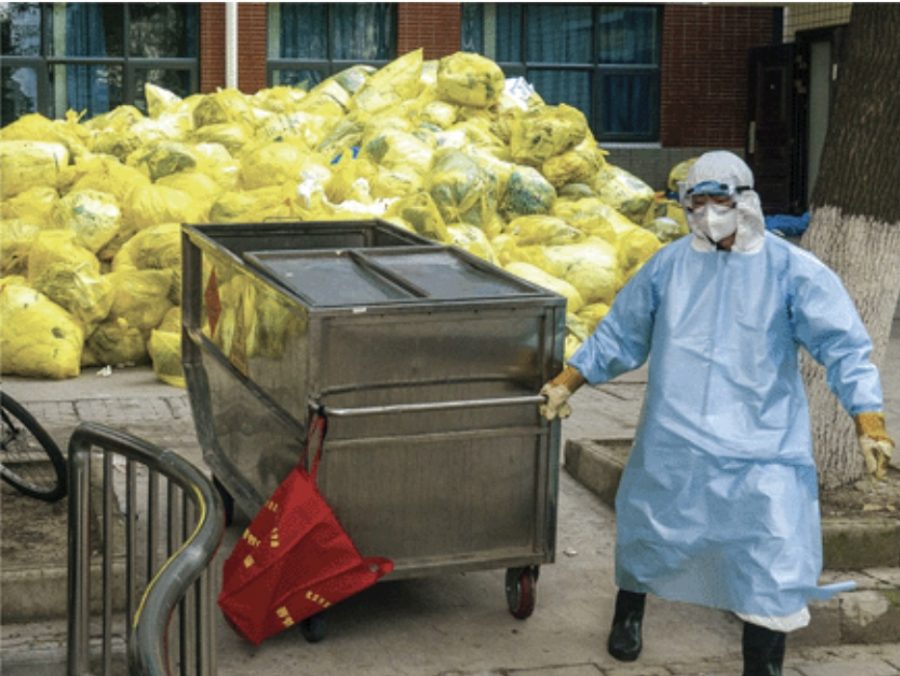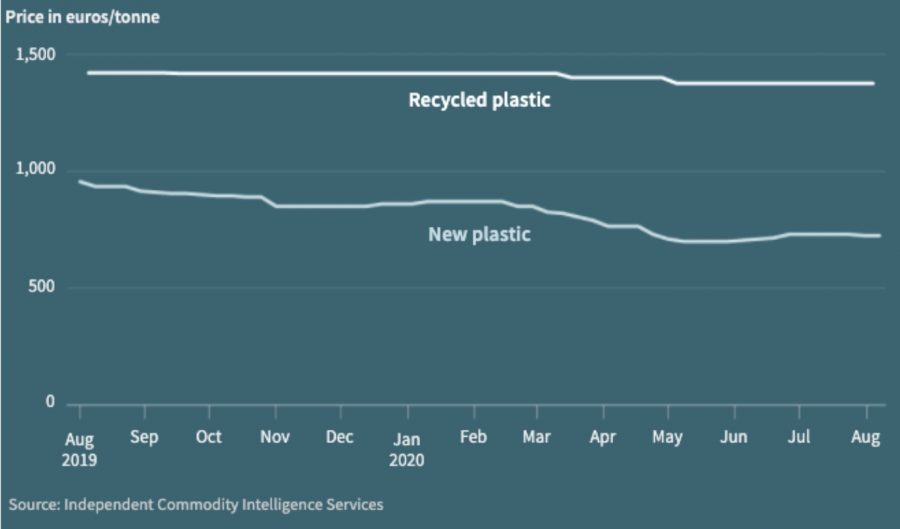COVID-19 & Plastic Waste
February 25, 2021
Nowadays, it’s hard to see a person without a mask, most of which are single-use and plastic-based. Ever since the invention of synthetic plastic in 1907, it has been used in almost everything from shampoo containers and mechanical pencils to ziploc bags and children’s toys. Since 1950, the world has created 6.3 billion tons of plastic waste, 91% of which were not recycled, according to the Reuters Investigates. Even with rising awareness of global warming and plastic pollution, the accumulation of plastic wastes is still on the rise, and the Covid-19 pandemic has significantly exacerbated the situation.
The pandemic has caused soaring demands in plastic-based personal protective equipment (PPE) and packaging materials among the general public, service workers, and health care workers. Some prevalent uses of plastic include: hospital gowns, gloves, single-use masks, face shields, bubble sheets for packaging, home-delivered grocery packaging, packaged take-out meals, etc. Disposable face masks, used by almost everyone in public, especially have a huge impact. According to the South China Morning Post, single-use mask production in China soared to 116 million per day in February of 2020, 12 times the usual quantity. According to another consultancy, Frost & Sullivan, the United States generated an entire year’s worth of medical waste in the two months at the height of the pandemic. It has been estimated that if the global population adheres to one mask daily per person after lockdowns are lifted, the pandemic could result in monthly global consumption and waste of 129 billion face masks and 65 billion gloves. Considering that the ordinary plastic wastes continue to surge in billions, the accumulation of additional billions of PPE waste is extremely problematic.
Another problem rests at the decreasing cost of new plastic production and rather expensive cost of recycled plastic materials. The economic slowdown has decreased oil or fuel costs and demands. Since new “virgin” plastics begin with fossil fuel, decreasing oil cost has also decreased the cost of new plastics. In addition, according to the market analysts at the Independent Commodity Intelligence Services (ICIS), it’s 83 to 93% more expensive to make recycled plastic than new PET plastics (PET is a type of plastic that composes the vast majority of disposable beverage and food containers). This means production companies will mostly rely on using new plastic rather than recycled plastic. New plastic has long been cheaper to purchase than recycled plastic. Decreased oil prices in effect of the pandemic has widened the gap.
As much as people have been impacted by the Covid-19 pandemic, the environment is also facing detrimental impacts. A way that people can help limit PPE waste would be to limit the usage of single-use masks by restraining from going to public places or social gatherings often. However, governmental regulations and environmental-friendly actions by large production companies seems necessary to bring about a much significant change.
Sources
- reuters.com/investigates/special-report/health-coronavirus-plastic-recycling/#:~:text=Since%20COVID-19%2C%20even%20drinks,Commodity%20Intelligence%20Services%20(ICIS)
- https://ourworldindata.org/plastic-pollution
- https://www.scmp.com/economy/global-economy/article/3074821/coronavirus-chinas-mask-making-juggernaut-cranks-gear
- https://pubs.acs.org/doi/abs/10.1021/acs.est.0c02178



